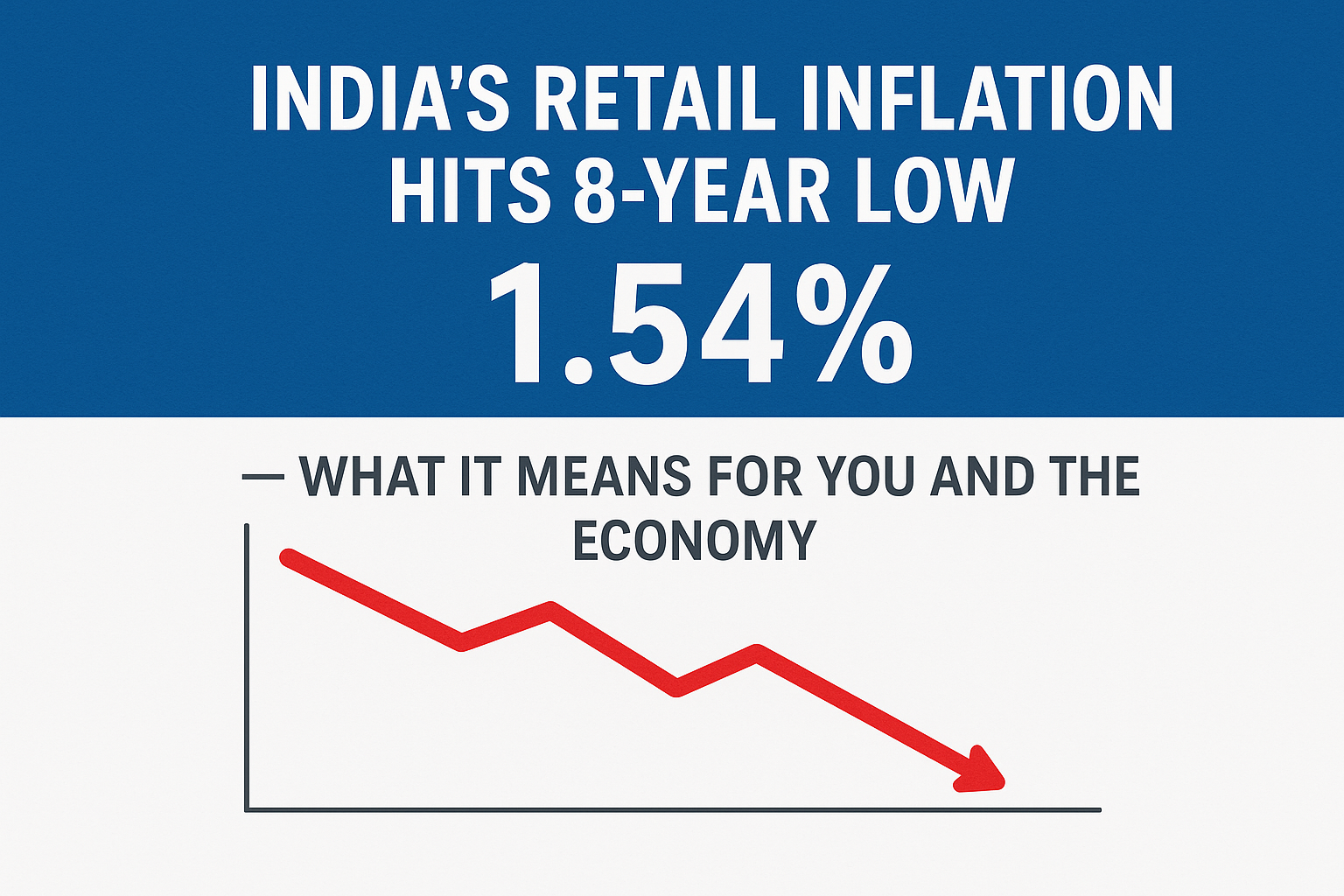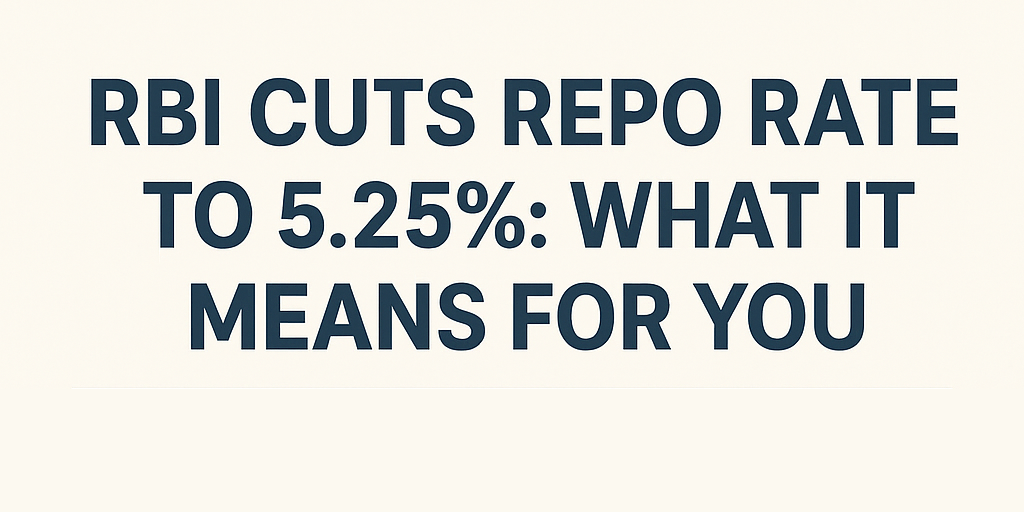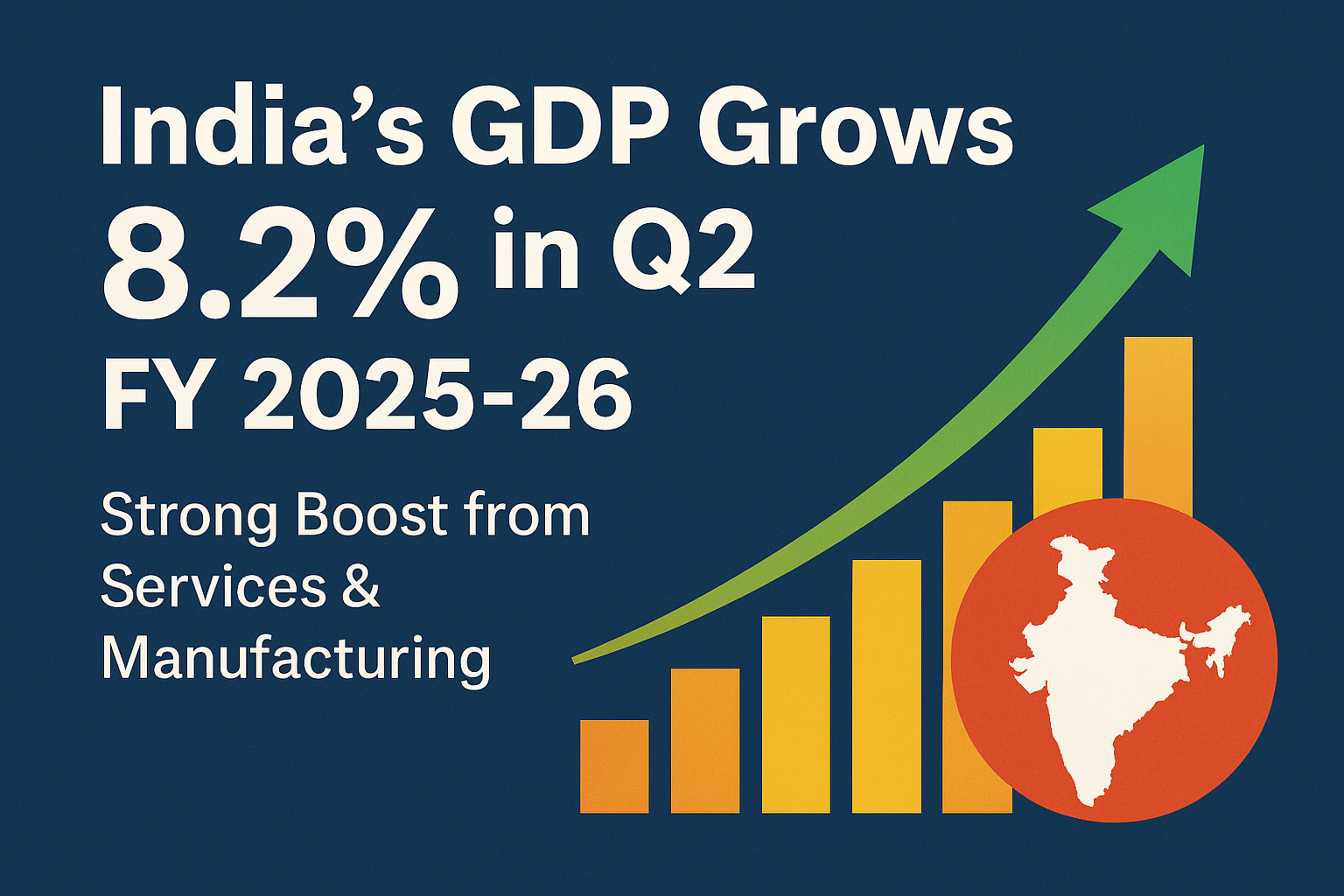India’s latest inflation report brought a pleasant surprise for consumers and policymakers alike.
Market analysts had expected Consumer Price Index (CPI) inflation to hover around 1.70%, but the official figure came in lower — at 1.54%.
This marks the lowest inflation level since 2017, confirming that price pressures across the economy have eased significantly. The decline was largely driven by softening food prices and a favorable base effect, both of which contributed to the steep fall in the headline number.
Table of Contents
Toggle📊 Q2 Inflation vs. RBI Forecasts: A Positive Surprise
The September data holds particular significance as it completes the second fiscal quarter (July–September), allowing a clear comparison with the Reserve Bank of India’s (RBI) projections.
| Month | CPI Inflation |
|---|---|
| July | 1.55% |
| August | 2.07% |
| September | 1.54% |
Averaging the three months gives a Q2 inflation rate of 1.72% — slightly below the RBI’s latest projection of 1.8% (which was already revised downward from 2.1% in its last Monetary Policy Committee meeting).
This suggests inflation is cooling faster than expected, raising hopes that the RBI may consider rate cuts in upcoming policy reviews to further support economic momentum.
⚖️ Inflation Below 2% — Comfort or Concern?
While a low inflation rate is generally welcomed by consumers, inflation below 2% falls outside the RBI’s comfort range of 2%–6%.
Persistently low inflation can sometimes indicate weak demand or deflationary risks.
However, in this case, the drop was largely anticipated. The RBI had already projected inflation to slip below 2% during this quarter due to a good monsoon season, strong food supply, and stable energy prices.
The central bank expects this trend to persist through Q3 (October–December) before inflation rebounds closer to 4% in Q4, bringing it back into the target range.
Hence, while the current data reflects unusually low inflation, it remains consistent with the RBI’s short-term outlook rather than a cause for concern.
🧠 Why Your Wallet Feels Different — The CPI Weightage Puzzle
Many households might find the data unbelievable and ask:
“If inflation is just 1.5%, why do my hospital bills and school fees keep rising?”
The reason lies in how CPI inflation is calculated.
The Consumer Price Index tracks price changes across a basket of goods and services, each with a different weightage. Categories with higher weightage influence the final CPI number much more than those with smaller shares.
| Category | Weightage | Impact |
|---|---|---|
| Food & Beverages (F&B) | 45.86% | Nearly half the index — includes cereals, milk, vegetables, meat, oils, fruits, and spices. |
| Housing | 10.07% | Rent and maintenance costs. |
| Fuel & Light | 6.84% | Sensitive to oil and energy prices. |
| Health | 5.89% | Limited impact despite rising costs. |
| Education | 4.46% | Low influence on CPI despite noticeable fee hikes. |
Source:https://www.mospi.gov.in/percentage-share
Because Food & Beverages dominate the CPI, any decline in food prices can sharply pull down overall inflation — even if education or healthcare costs are rising rapidly.
In essence, the inflation you feel may differ from the national average, depending on your spending pattern.
📈 Market Reaction: Calm but Watchful
Financial markets reacted cautiously to the data. The Gift Nifty remained largely flat, as investors awaited the RBI’s next moves.
However, bond yields and rate-sensitive sectors such as banking, real estate, and automobiles could gain if the RBI signals a shift toward monetary easing.
The next few weeks will reveal how markets price in this softer-than-expected inflation trend.
🧭 Final Thoughts
India’s September CPI inflation of 1.54% underscores a powerful disinflationary phase, showcasing a stable price environment that supports long-term growth.
While this creates room for potential rate cuts, the central bank will likely tread carefully until it confirms that low inflation doesn’t turn into weak demand.
For now, the message is clear — India’s economy is in a sweet spot:
Low inflation, steady growth, and policy flexibility.




